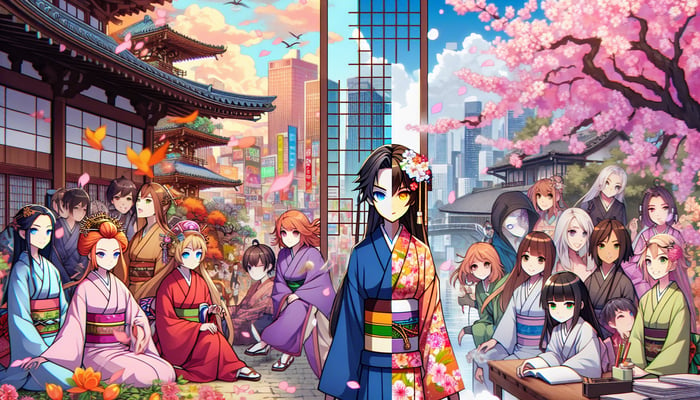Cultural Differences in Anime Censorship: East vs. West
Hello, anime enthusiasts! Today we're diving into a topic that's as intriguing as it is enlightening: the cultural differences in anime censorship between the East and the West. For fans of anime art and custom products like those we create at UtheHero, understanding these differences can deepen your appreciation for the imaginative world of anime.
What is Anime Censorship?
In essence, anime censorship refers to the modification or shielding of parts considered inappropriate or sensitive for particular audiences. It can include blurring out violent scenes, altering dialogue, or even changing character costumes. Both Eastern and Western cultures have different standards and expectations, leading to significant variations in censorship practices.
Eastern Censorship: A Closer Look
Japan, the homeland of anime, has its unique approach to censorship, focusing largely on depictions that might violate Japan's ethical standards. This includes restrictions on explicit content and sensitivities surrounding sensitive subjects like political satire. Interestingly, Japan's laws don't typically restrict violence as much as other content, reflecting societal norms where animated violence is often seen as less impactful than live-action.
- Violence: Generally less censored compared to sexual content, it's often prevalent in anime storylines.
- Cultural Sensitivities: Occasional censorship of political themes or taboos, like nudity, reflects societal constraints.
Western Censorship: What Does It Entail?
In contrast, Western censorship often centers around violence and sexual content, influenced by various cultural norms and legal frameworks. Networks and streaming services also adapt to regional regulations and expectations, often resulting in edited versions of anime originally intended for adult audiences.
- Violence: Subject to significant modification to align with Western media standards, especially for younger audiences.
- Sexual Content: Heavily scrutinized with strict adherence to age ratings and public sensibilities.
How These Differences Impact the Anime Experience
For dedicated fans, the variations can range from mildly noticeable to contentious, sometimes prompting heated debates or demands for uncensored versions. However, understanding these differences enriches our view of anime as an art form shaped by diverse cultural lenses.
Tips for Navigating Anime Censorship
For those wanting the authentic experience, considering where you consume anime can be crucial. Here’s how you can navigate the often complex field of censorship:
- Research Streaming Services: Some platforms offer both censored and uncensored versions, catering to varied preferences.
- Understand Age Ratings: They provide clues about potential content edits.
- Join Online Communities: Engage with fellow fans who can offer insights and recommendations on where to find original content.
Anime is more than just a form of entertainment; it's a window into different cultural narratives and sensibilities. By exploring censorship differences, we gain a greater appreciation and understanding of what makes anime a groundbreaking, globally-loved art form.
Happy watching and dreaming, fellow otakus!
